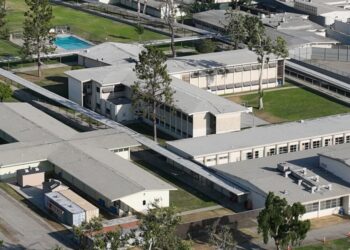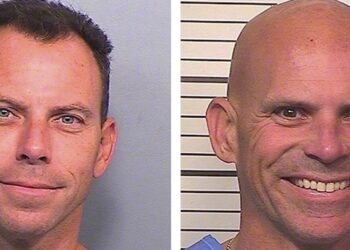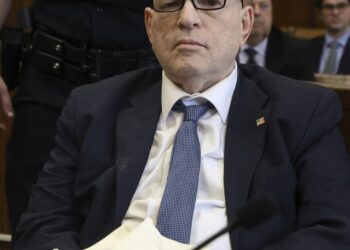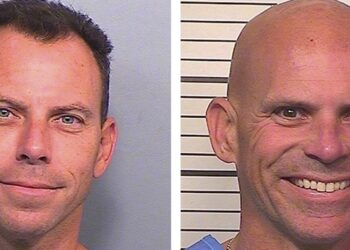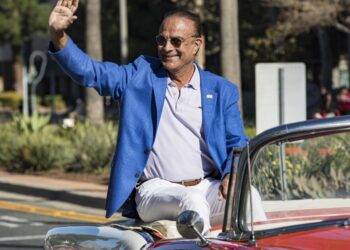Bill Bodner remembers when he first encountered fentanyl on the streets of New York City.
Back in 1991, he was a new agent working for the U.S. Drug Enforcement Agency. In February that year, at least 12 people died and dozens more overdosed in the New York City area, ingesting a batch of fentanyl-laced heroin, branded then as “Tango and Cash.”
“(Police) were cruising around with loudspeakers,” telling residents not to take the drug cocktail, Bodner said.
It’s been more than 32 years since that moment, and more than ever, local and federal law enforcement are worried about the increasing presence of fentanyl in local communities.
Now, Bodner is the special agent in charge of the DEA’s Los Angeles office. On Tuesday, he said he couldn’t believe more than three decades later he’d still be talking about fentanyl.
“It’s crazy,” he said.
Bodner and about a dozen other law enforcement leaders from around the Southern California area on Tuesday, May 9 announced a string of cases they’ve filed over the last year in federal court targeting dealers accused of selling fentanyl and fake drugs spiked with fentanyl to unsuspecting users.
Fentanyl is a synthetic opioid that’s easy to produce and far more powerful than either the painkillers found in some prescription drugs or actual heroin. Bodner noted that for illicit drug manufacturers the process for making fentanyl is as easy as mixing certain chemicals together by hand.
“There’s no heat required,” Bodner said from the Spring Street Courthouse in Downtown L.A. He said ease of making fentanyl is a big part of why it has become so popular for drug cartels, who can add fentanyl to other drugs to increase their power, or to manufacture fake versions of other drugs.
The U.S. Attorney’s Office in Los Angeles has filed at least 12 cases recently against suspects accused of dealing fentanyl to victims who later died.
The cases include charges against a North Hollywood man arrested last…
Read the full article here


